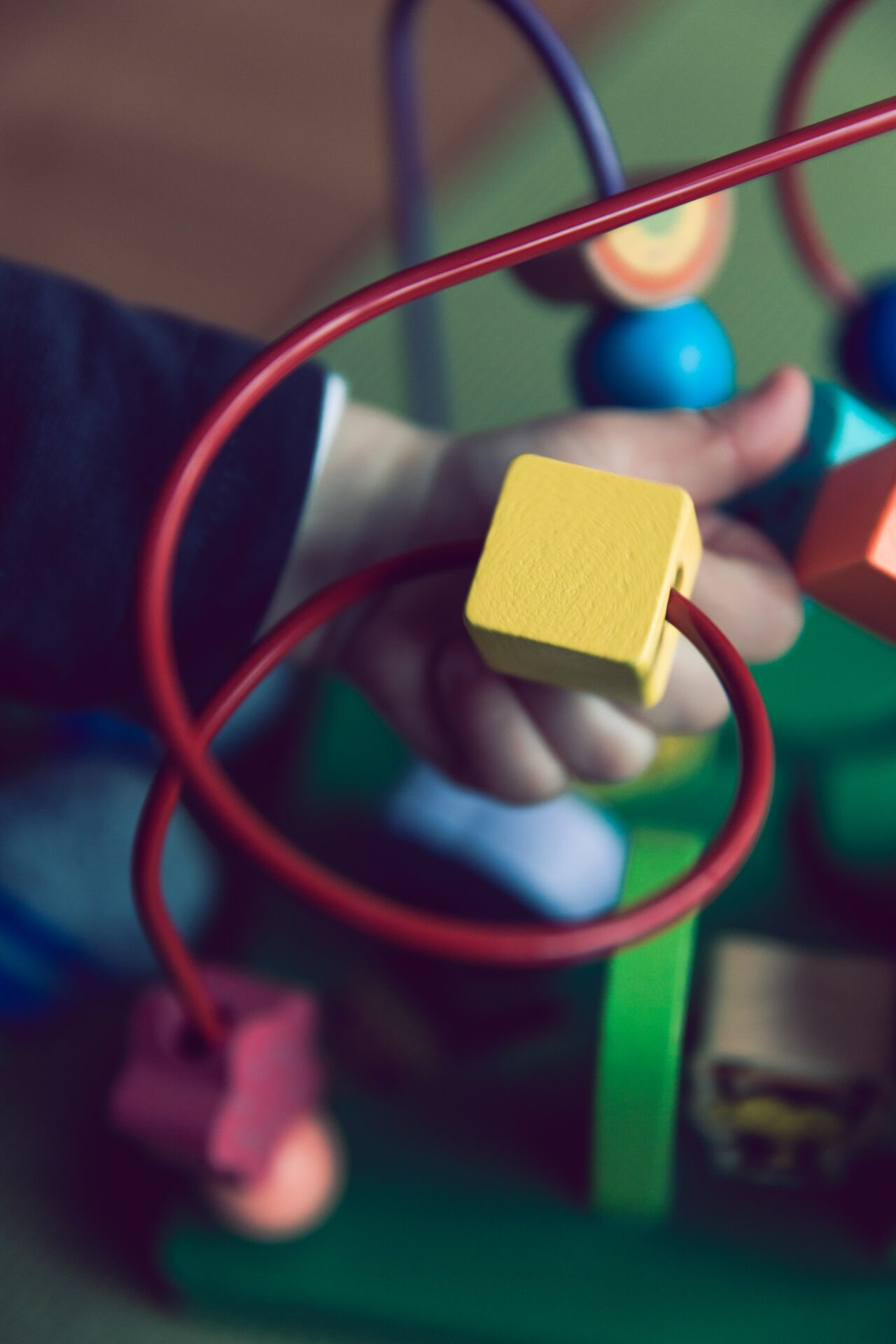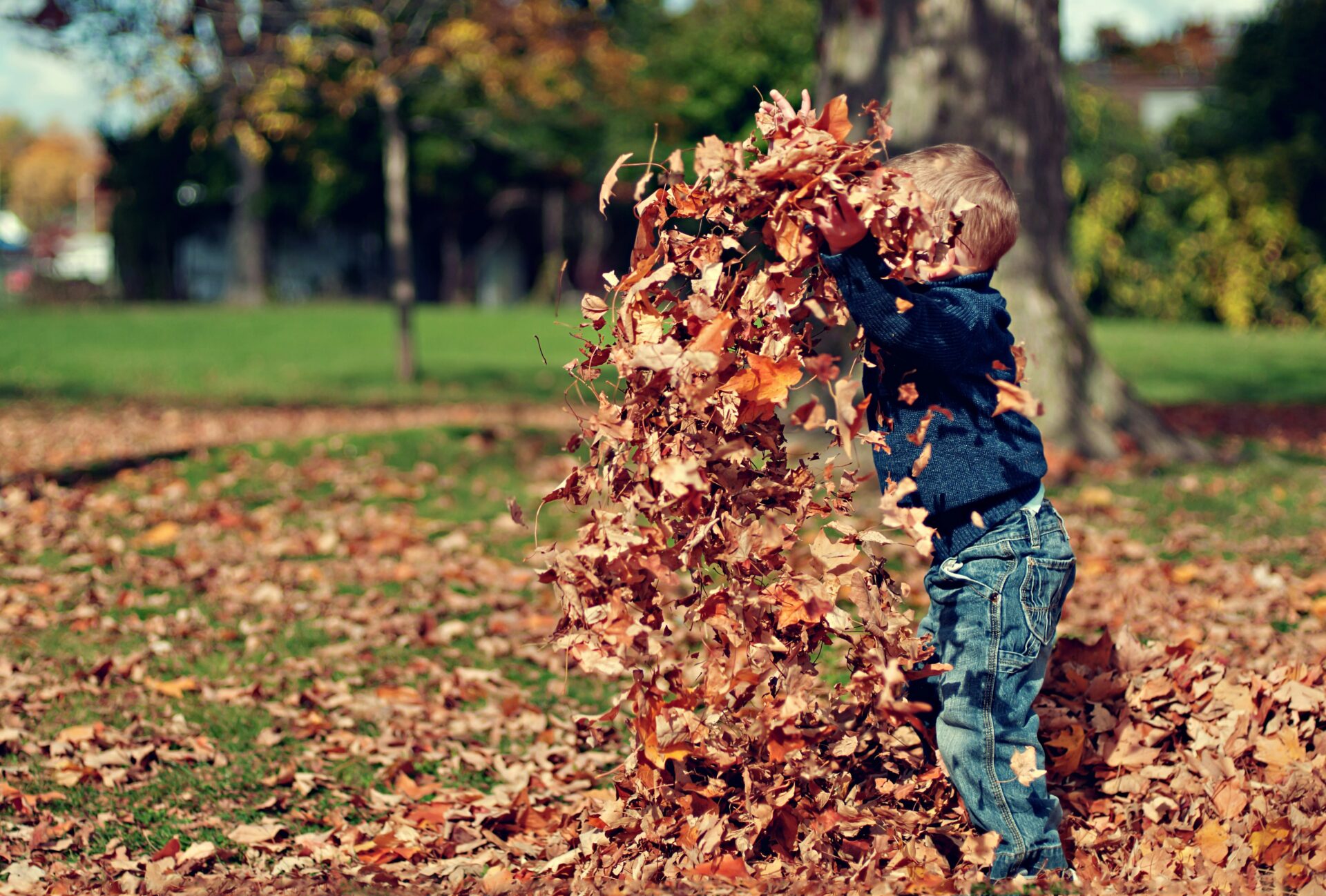Imagine a world of captivating sights, enticing textures, and delightful sounds. A world where every touch, every glance, and every step is a sensory adventure for babies and toddlers. In our article, “Sensory Splendor: Infusing Outdoor Play with Sensory Activities for Babies and Toddlers,” we will explore the magical realm of outdoor play and the endless possibilities it offers for engaging young minds and senses. From exploring nature’s treasures to creating sensory bins, get ready to embark on a journey that will awaken your child’s curiosity, imagination, and love for the great outdoors. Outdoor play is not only a fun and enjoyable experience for babies and toddlers, but it also offers numerous benefits for their development. Engaging in sensory activities outdoors can stimulate their senses and promote physical, cognitive, and emotional growth. In this comprehensive article, we will explore the benefits of outdoor play and delve into the world of sensory activities specifically designed for babies and toddlers.
Benefits of Outdoor Play
Physical Development
Outdoor play provides ample opportunities for babies and toddlers to engage in physical activities and develop their motor skills. From running and jumping to climbing and balancing, these movements help strengthen their muscles and improve coordination. Activities like swinging, sliding, and crawling through tunnels enhance their gross motor skills, while picking up objects and manipulating sand or water in sensory bins enhance their fine motor skills.
Cognitive Development
Outdoor play stimulates cognitive development by encouraging babies and toddlers to explore their surroundings and problem-solve. They encounter new sights, sounds, smells, and textures, which ignite their curiosity and promote sensory integration. Through activities like nature scavenger hunts, color sorting with natural objects, and obstacle courses, young children develop their cognitive abilities such as sorting, classifying, and categorizing.
Emotional Development
Being in nature and engaging in outdoor play has a positive impact on the emotional well-being of babies and toddlers. It provides them with a sense of freedom, allowing them to explore and express themselves freely. The fresh air, natural light, and freedom of movement contribute to a sense of happiness and reduce stress levels. Outdoor play also fosters social interaction and cooperation among children, promoting empathy and emotional intelligence.
Introduction to Sensory Activities
What are Sensory Activities?
Sensory activities involve the use of different materials and experiences to stimulate the senses of babies and toddlers. These activities focus on engaging their senses of sight, hearing, touch, smell, and taste, allowing them to explore and make sense of the world around them. Sensory activities can be both soothing and stimulating, depending on the intent and materials used.
Why are Sensory Activities Important for Babies and Toddlers?
Sensory activities play a crucial role in the early development of babies and toddlers. The sensory experiences they encounter help them form connections in their brains, laying the foundation for future learning and cognitive development. These activities also support language development, motor skills, and emotional regulation. Engaging in sensory play allows children to develop their own preferences and sensory sensitivities, fostering a positive relationship with their senses.
Benefits of Sensory Activities for Babies and Toddlers
Sensory activities offer numerous benefits for the development of babies and toddlers. These activities promote sensory integration, enhance cognitive skills, and stimulate creativity. By engaging multiple senses, sensory activities strengthen neural pathways and facilitate learning. Sensory play also aids in the development of fine motor skills and hand-eye coordination. Furthermore, sensory activities provide a calming and relaxing effect, helping children regulate their emotions and reducing anxiety.

This image is property of images.unsplash.com.
Creating an Outdoor Sensory Play Space
Choosing the Right Location
When creating an outdoor sensory play space, it is important to consider the location carefully. Look for a space that is safe, spacious, and easily accessible. Consider factors such as shade, proximity to water sources, and the natural elements available. An ideal location could be a backyard, a park with designated play areas, or a nature reserve that allows safe exploration.
Safety Considerations
Ensuring the safety of babies and toddlers during outdoor play is paramount. When setting up a sensory play space, make sure it is free from hazards such as sharp objects, poisonous plants, and steep drops. Use age-appropriate materials and equipment, and regularly inspect them for any signs of damage or wear. Provide adequate supervision and establish clear rules to ensure a safe and enjoyable play environment.
Materials and Equipment
To create an outdoor sensory play space, gather a variety of materials and equipment that stimulate different senses. Consider items such as bubble wands, paint brushes, musical chimes, sensory bins, and nature-inspired objects. Natural elements like sand, water, rocks, and leaves are also wonderful additions. Opt for eco-friendly and non-toxic materials whenever possible to ensure the safety of the children and the environment.
Sensory Activities for Sight
Bubble Painting
Bubble painting is a delightful sensory activity that engages the sense of sight while promoting creativity. Set up a painting station outdoors by laying out large sheets of paper and filling shallow containers with non-toxic paint diluted with water. Dip bubble wands into the paint mixture and blow bubbles onto the paper. As the bubbles burst, they leave beautiful splatters of color. Encourage babies and toddlers to observe the vibrant patterns and explore the different colors created.
Nature Scavenger Hunt
A nature scavenger hunt is a fantastic sensory activity that not only stimulates the sense of sight but also encourages exploration and observation skills. Create a list of items found in nature, such as different colored flowers, leaves of various shapes, or specific types of rocks. Provide each child with a bag or basket to collect their finds. As they search for the items, they will develop their visual perception and learn about the natural world.
Color Sorting with Natural Objects
Color sorting with natural objects is a simple yet effective sensory activity that promotes color recognition and sorting skills. Gather an assortment of objects in different colors, such as leaves, flowers, pebbles, or small pieces of fabric. Provide babies and toddlers with containers or trays labeled with the corresponding colors. Encourage them to sort and place the objects into the correct containers based on their colors. This activity not only engages their sense of sight but also develops their cognitive skills.

This image is property of images.unsplash.com.
Sensory Activities for Hearing
Musical Chimes
Installing musical chimes in the outdoor play space can provide a fascinating auditory experience for babies and toddlers. Hang musical chimes at varying heights, ensuring they are within reach of the children. As the wind blows or when children interact with the chimes, they produce beautiful sounds. Encourage the children to explore the different sounds by touching and gently tapping the chimes. This sensory activity enhances auditory perception and promotes an appreciation for music.
Listening Walk
A listening walk is a simple yet captivating sensory activity that encourages babies and toddlers to pay attention to the sounds around them. Take a leisurely stroll with the children, and encourage them to listen carefully to the various sounds in the environment. Point out birds chirping, leaves rustling, or distant traffic noises. Discuss the different sounds and ask the children to imitate them. This activity not only stimulates the sense of hearing but also fosters language development and listening skills.
Outdoor Instruments
Introducing outdoor instruments, such as drums, xylophones, or simple wind instruments, adds a musical element to the outdoor play space. Provide babies and toddlers with the instruments and encourage them to explore the sounds they can create. As they experiment with different rhythms and volumes, they enhance their auditory perception and develop their sense of rhythm. This sensory activity also promotes self-expression and creativity.
Sensory Activities for Touch
Sensory Bins
Sensory bins are versatile and engaging sensory activities that promote tactile exploration and fine motor skills. Fill large containers with materials such as rice, sand, or water beads, and add objects like scoops, sieves, and small toys for added interest. Babies and toddlers can dig, pour, and manipulate the materials with their hands, enhancing their sense of touch and developing their hand-eye coordination. Sensory bins provide endless opportunities for imaginative and independent play.
Mud Play
Mud play is a classic outdoor sensory activity that enables babies and toddlers to experience different textures and sensations. Set up a designated mud play area using child-safe mud or organic soil mixed with water. Babies and toddlers can squish, pat, and explore the mud with their hands and feet. This tactile experience enhances their sensory perception and promotes sensory integration. Be prepared for messy play and keep a basin with warm water and towels nearby for easy clean-up.
Water Play
Water play is a refreshing and soothing sensory activity that can be enjoyed in various ways. Set up a shallow water table or provide containers filled with water, along with cups, spoons, and other water-friendly toys. Babies and toddlers can splash, pour, and experiment with different water movements. This tactile experience stimulates their sense of touch and increases their awareness of cause and effect. Water play also offers opportunities for learning about volume, temperature, and buoyancy.

This image is property of images.unsplash.com.
Sensory Activities for Smell
Herb Garden
Creating an herb garden provides babies and toddlers with an interactive sensory experience centered around the sense of smell. Plant a variety of herbs like mint, lavender, rosemary, or basil in pots or a designated garden bed. Encourage the children to explore the garden, rub the leaves between their fingers, and take in the aromatic scents. Engaging with different smells promotes olfactory perception and introduces them to the wonders of the natural world.
Flower Discovery
Flower discovery is a delightful sensory activity that introduces babies and toddlers to the scents and textures of different flowers. Take the children on a gentle walk through a garden or park, pointing out different flowers along the way. Allow them to touch and smell the flowers, observing their unique scents and petals. Encourage them to name the flowers and describe the scents they detect. This sensory activity not only stimulates the sense of smell but also enhances language development and sensory vocabulary.
Outdoor Cooking
Outdoor cooking provides an opportunity for babies and toddlers to engage their sense of smell while exploring different scents in a culinary setting. Set up a supervised cooking area where children can participate in age-appropriate cooking activities using herbs, fruits, or vegetables. As they chop, mix, and cook, they will become familiar with different scents and flavors. Cooking activities also foster independence, creativity, and an appreciation for different foods.
Sensory Activities for Taste
Picnics and Outdoor Snacks
Picnics and outdoor snacks offer babies and toddlers the chance to explore new tastes and textures in a natural setting. Pack a variety of healthy and age-appropriate snacks, such as cut fruits, cheese cubes, or finger foods, and spread them out on a blanket or picnic table. Encourage the children to try different foods and describe the tastes they experience. This sensory activity enhances the sense of taste, promotes healthy eating habits, and creates a positive association with outdoor dining.
Edible Art
Edible art allows babies and toddlers to explore their creativity while engaging their sense of taste. Provide a variety of edible materials such as yogurt, colored sauces, fruits, and vegetables. Invite the children to create artwork on a large, clean surface using the edible ingredients. They can use their fingers or child-friendly utensils to manipulate the materials and taste their creations as they go along. Edible art promotes sensory exploration, fine motor skills, and encourages a playful approach to food.
Herb Tasting
Herb tasting is a simple and interactive sensory activity that introduces babies and toddlers to different flavors and scents. Set up a tasting station with small portions of fresh herbs such as parsley, mint, or cilantro. Encourage the children to pick up a leaf, smell it, and taste it. Discuss the different flavors they encounter, such as sweet, sour, or bitter. Through herb tasting, babies and toddlers develop their sense of taste, explore new flavors, and build their sensory vocabulary.
Incorporating Movement and Sensory Activities
Obstacle Courses
Obstacle courses combine movement and sensory activities to promote physical development and sensory integration. Set up a course using items like cones, hula hoops, tunnels, and stepping stones. Babies and toddlers can crawl under or through obstacles, jump over small obstacles, or maneuver around them. Obstacle courses engage their gross motor skills, spatial awareness, and balance while incorporating sensory elements. Adjust the difficulty level based on age and developmental abilities.
Sensory Walkways
Creating sensory walkways provides babies and toddlers with a multi-sensory experience as they explore different textures and surfaces. Incorporate materials such as grass, sand, smooth stones, and textured mats into designated paths. Encourage children to walk barefoot or with their shoes on to experience the different sensations under their feet. Sensory walkways stimulate the tactile senses while promoting balance and coordination. Ensure the surfaces are safe and free from any sharp objects or debris.
Nature Yoga
Nature yoga combines the benefits of outdoor play with the calming and centering effects of yoga. Choose a peaceful area surrounded by nature and guide babies and toddlers through simple yoga poses. Encourage them to focus on their breath, emulate animal movements, or imitate natural elements like trees or flowers. Nature yoga promotes body awareness, concentration, and self-regulation. Incorporate sensory elements, such as holding a leaf or listening to nature sounds, to enhance the experience.
Sensory Activities for Weather Exploration
Rain Play
When the rain falls, embrace the opportunity for sensory exploration and play. Allow babies and toddlers to experience the sensation of raindrops on their skin by dressing them in appropriate waterproof clothing and taking them outside. Encourage them to catch raindrops with their tongues, jump in puddles, or make mud pies. Rain play stimulates the sense of touch and promotes a sense of playfulness and wonder. Ensure the children are supervised and protected from any potential hazards.
Sun and Shadows
The sun and shadows offer a captivating sensory experience for babies and toddlers to explore the interplay between light and darkness. Find a suitable area with good natural light, such as an open field or a spot under a tree. Encourage the children to observe their own shadows and explore how shadows change in different positions and throughout the day. On sunny days, provide materials like colored cellophane or prisms to create beautiful light displays. This sensory activity enhances visual perception and fosters an understanding of light and shadow.
Wind Art
Wind art is a creative and mesmerizing sensory activity that capitalizes on the gentle breezes of the great outdoors. Hang wind chimes, mobiles, or wind spinners in an area where the wind is likely to blow. Encourage babies and toddlers to observe how the wind interacts with the objects, creating movement and sound. They can experiment with lightweight materials like ribbons or feathers and observe how they dance and flutter in the wind. Wind art engages the sense of sight and hearing while promoting an appreciation for nature’s forces.
In conclusion, infusing outdoor play with sensory activities creates a sensory splendor for babies and toddlers. The benefits of outdoor sensory play are numerous, spanning physical, cognitive, and emotional development. By engaging their senses of sight, hearing, touch, smell, and taste, babies and toddlers enhance their sensory perception, develop crucial skills, and cultivate a lifelong appreciation for the natural world. Creating an outdoor sensory play space, incorporating movement, and exploring weather conditions add depth and variety to their sensory experiences. As caregivers, let’s embrace the wonders of sensory play outdoors and provide our little ones with a holistic foundation for their growth and development.

